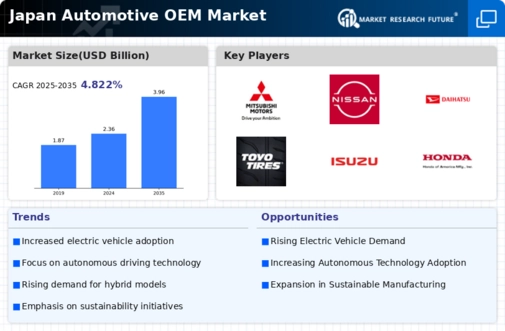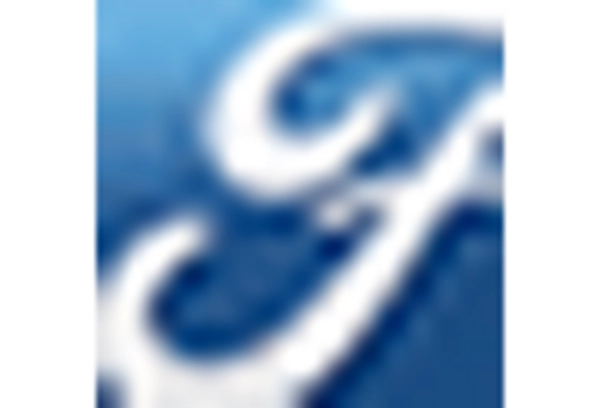The automotive oem market in Japan is characterized by intense competition and rapid innovation, driven by a combination of technological advancements and shifting consumer preferences. Major players such as Toyota Motor Corporation (Japan), Honda Motor Co Ltd (Japan), and Nissan Motor Co Ltd (Japan) are at the forefront, focusing on electric vehicle (EV) development, autonomous driving technologies, and sustainable manufacturing practices. These companies are not only competing on product offerings but also on their ability to adapt to regulatory changes and consumer demands for greener alternatives, thereby shaping a dynamic competitive landscape.
Key business tactics employed by these companies include localizing manufacturing to reduce costs and enhance supply chain efficiency. The market appears moderately fragmented, with a mix of established giants and emerging players. The collective influence of key players is significant, as they leverage their extensive networks and resources to optimize operations and respond to market fluctuations effectively.
In October 2025, Toyota Motor Corporation (Japan) announced a strategic partnership with a leading battery manufacturer to enhance its EV production capabilities. This move is likely to bolster Toyota's position in the growing EV segment, as it aims to increase its market share and meet the rising demand for sustainable vehicles. The partnership underscores Toyota's commitment to innovation and its proactive approach to securing a reliable supply chain for critical components.
In September 2025, Honda Motor Co Ltd (Japan) unveiled its ambitious plan to transition to a fully electric lineup by 2040, with a focus on developing advanced battery technologies. This strategic pivot not only aligns with global sustainability trends but also positions Honda as a forward-thinking player in the automotive sector. The emphasis on electrification may enhance Honda's competitive edge, particularly as consumers increasingly prioritize eco-friendly options.
In August 2025, Nissan Motor Co Ltd (Japan) launched a new initiative aimed at integrating AI into its manufacturing processes, enhancing efficiency and reducing waste. This initiative reflects Nissan's commitment to digital transformation and operational excellence. By leveraging AI, Nissan could potentially streamline production and improve product quality, thereby strengthening its market position in an increasingly competitive environment.
As of November 2025, the automotive oem market is witnessing a pronounced shift towards digitalization, sustainability, and AI integration. Strategic alliances are becoming increasingly vital, as companies collaborate to share resources and expertise in developing innovative solutions. The competitive differentiation is likely to evolve from traditional price-based competition to a focus on technological advancements, supply chain reliability, and sustainable practices. This transition suggests that companies that prioritize innovation and adaptability will be better positioned to thrive in the future.

















Leave a Comment